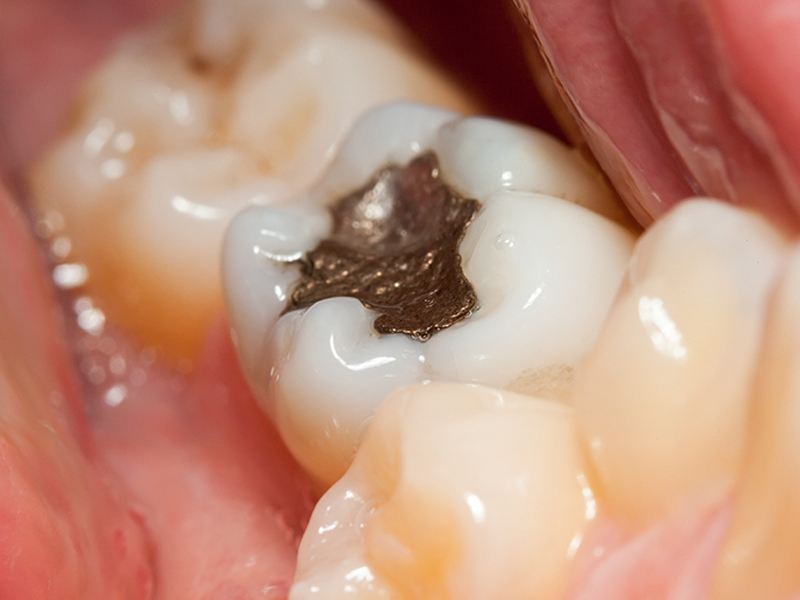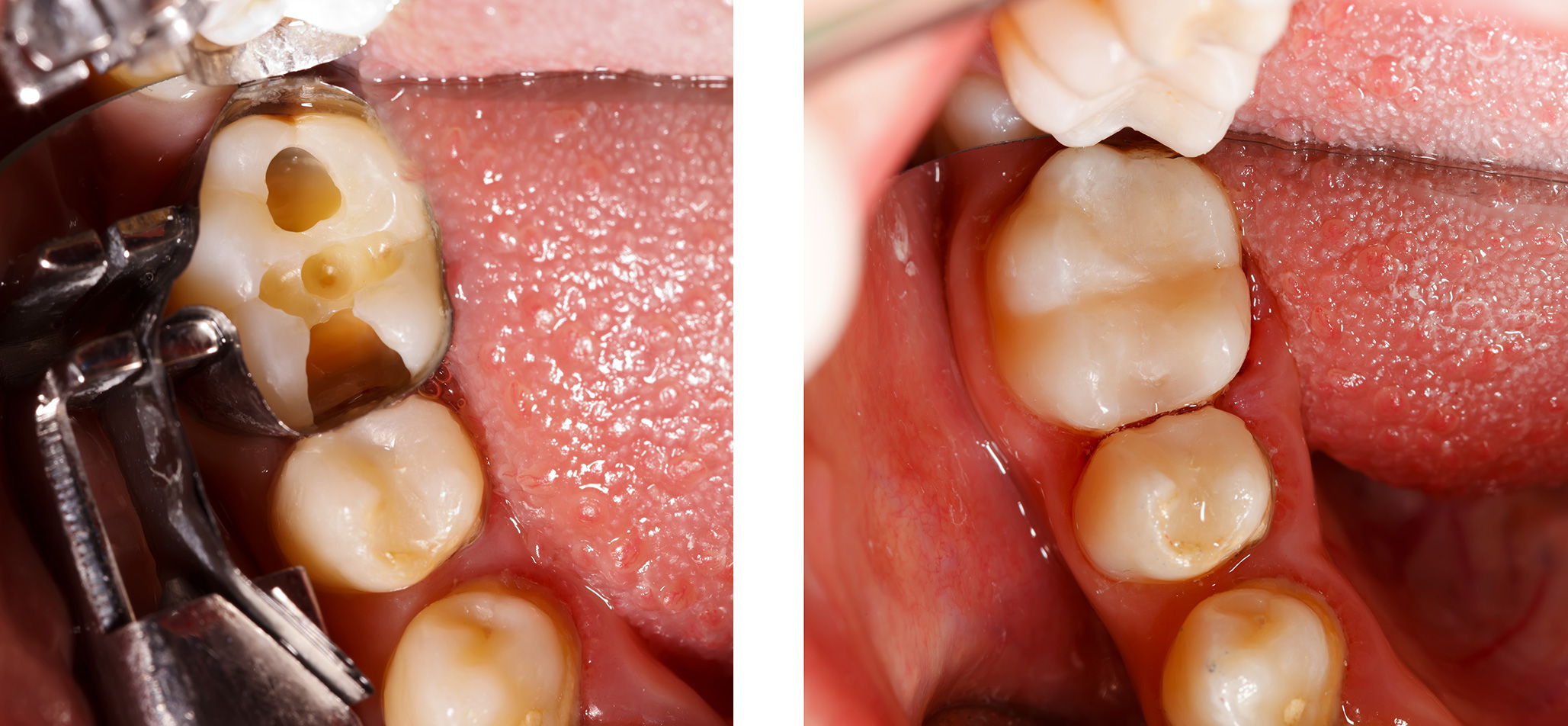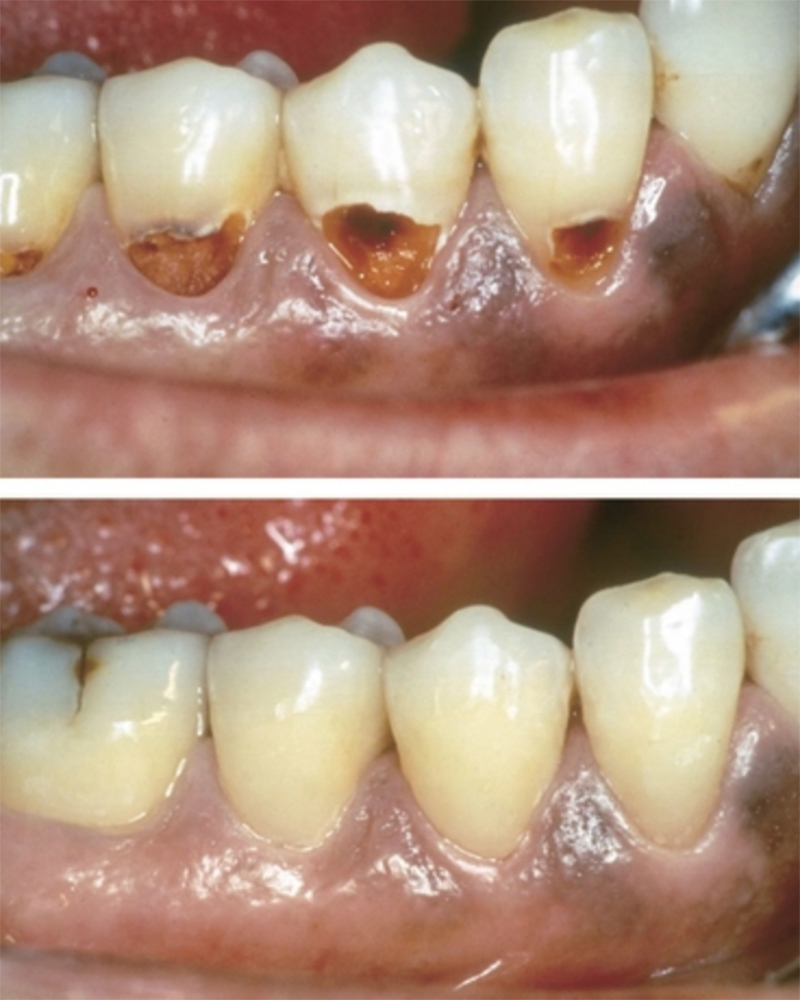Dental fillings are a common dental procedure used to treat cavities and restore teeth. They are used to fill in holes or damaged areas in a tooth caused by decay or trauma. Dental fillings can help prevent further damage to the tooth and restore its function. There are several types of dental filling materials available, each with its own advantages and disadvantages.
Amalgam Fillings
Amalgam fillings are made of a mixture of metals, including silver, mercury, tin, and copper. These fillings are durable and less expensive than composite fillings. Amalgam fillings are often used in the back teeth because they are not as visible. Tulip Dental is an amalgam free clinic as we believe the disadvantages outweigh the benefits.
Advantages:
- Amalgam fillings are long-lasting and can withstand the force of chewing for many years, making them a popular choice for molars and premolars.
- Amalgam fillings are easy to apply as they are not technique sensitive.
Disadvantages:
- The silver colour of amalgam fillings can be unappealing, particularly when they are visible in the front of the mouth.
- Although Amalgam fillings are durable they can expand and contract due to temperature changes in the mouth, which can cause cracks and fractures in the tooth.
- Amalgam fillings contain a small amount of mercury, which has raised concerns about its potential toxicity. However, studies have shown that the amount of mercury released from amalgam fillings is well below the safety threshold set by regulatory agencies.
- Requires more healthy tooth structure to be removed as its does not use a chemical bond and therefore requires mechanical undercuts to stay in.

Composite Fillings
Composite fillings are made of a mixture of resin and fine particles of glass or ceramic. They are tooth-coloured and can be matched to the shade of the natural tooth. Composite fillings are bonded directly to the tooth and require less drilling than other types of fillings. No longer an option reserved strictly for front teeth, dental composite is now strong and durable enough to be considered a significantly better choice for fillings in back teeth than amalgam.
Advantages of composite
- Composite fillings can be matched to the colour of your natural teeth, making them almost invisible.
- Minimal removal of tooth structure: Composite fillings require less removal of tooth structure than amalgam fillings.
- Versatile: Composite fillings can be used to restore both front and back teeth
- Strong and durable
- The bonding process reduced leaking and margin decay
Potential Drawbacks of Composite
- Placing composite is a very technique sensitive procedure and may not be suitable in areas of the mouth that cannot be kept dry during placement.

Glass Ionomer Cement (GIC)
Glass ionomer cement is a tooth-coloured cement made up of silicate glass-powder and bonds directly with the tooth surface. GIC fillings are typically used for:
- Temporary fillings.
- Decay that is located around the gumlines.
- Baby teeth.
- Fissure protections
As fluoride is part of the silicate glass-powder, glass ionomer fillings have the unique advantage of being able to slowly release fluoride over time to the surrounding area – helping prevent future cavities and protect your teeth. Their use is primarily due to their flexibility – they are easier to apply compared to composite fillings
The benefits of GIC
- Fluoride release
- Easy preparation – less invasive
- Can be used for deep fillings as a base, then covered by composite to offer the benefits of fluoride and strength also known as the sandwich technique and has extremely high rates of success based on research.
- Bonds to tooth structure without the need for bonding agents, which also means that strict moisture control is not as critical
- Biocompatible, meaning that they are unlikely to cause allergic reactions or other adverse effects
Potential drawbacks of GIC
- Less durable than some other filling materials, such as composite resin or metal. They may not be suitable for use in areas of the mouth that experience a lot of biting force
- Can wear down or erode over time, particularly in areas where there is a lot of friction or pressure.

Which filling material is right for you?
The best type of filling material for an individual will depend on several factors, including the size, location of the cavity, cost, and the patient’s preference. Our dentist is more than happy to discuss your options and potential advantages and disadvantages to help determine the best option for you.

Leave A Comment